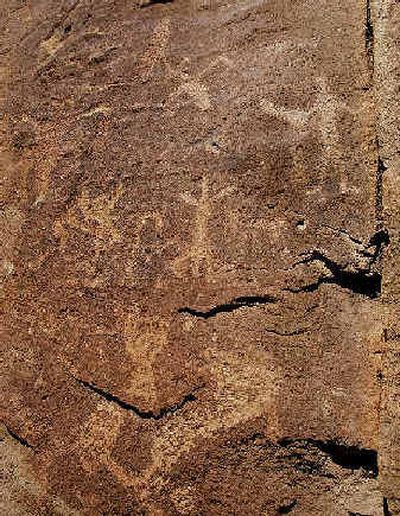Utah ranch contains clues about ancient life

HORSE CANYON, Utah – With considerable regret, Utah rancher Waldo Wilcox is inviting the public in to see his magnificent secret.
For a half century, Wilcox, 75, ran cattle on a remote ranch deep inside the Roan Cliffs of eastern Utah. He also preserved one of the most significant archaeological collections in North America: hundreds of ancient homes and artifacts left by Fremont Indians a thousand years ago.
The 4,200-acre ranch of sandstone cliffs, broad meadows and pine forests was recently bought by the state of Utah, which on Wednesday let the media in for the first time to see a glimpse of another time.
“This is a once in a lifetime opportunity, for me and for North American archaeology,” says Duncan Metcalfe, an archaeologist and curator of the Utah Museum of Natural History. “Waldo has left us a treasure trove here.”
Among the finds are mummified remains tucked into the cliffs, carefully preserved in strips of beaver skin.
For the casual tourist, the area now known as the Range Creek Wildlife Management Area will hold less attraction than the spectacular cliff dwellings of Mesa Verde or the elaborate villages of Chaco Canyon. Here, the hundreds of pit houses, granaries and examples of rock art known as pictographs and petroglyphs are mostly hidden from view and less visually appealing than other ancient Indian sites. But, says Utah state archaeologist Kevin Jones, “in terms of research potential this is unbelievable.”
The sites here may offer important clues to puzzling questions about the Fremont Indians, hunter-gatherers and sometime farmers who mostly occupied Utah. Like their Anasazi cousins to the south, they appear to have faded out around 1300 after 700 years of occupation.
What happened to them, and why? What can they tell us about the origins of agricultural cultivation? Why are so many of their dwelling and food storage sites situated in clearly defensible postures high up on cliffs?
“What it gives us is a laboratory,” says Metcalfe. “One of the big questions is the origins of agriculture. The Fremont are the perfect test case for doing that research and Range Creek is the perfect place. … There’s 100 years of (archaeology) work in this canyon.”
Metcalfe described the Fremont peoples’ daily lives as a constant struggle for survival. They subsisted at times on wild game and food such as nuts and berries they gathered. At other times they raised corn, but without irrigation their crops often failed. Ultimately, he says, they abandoned their semipermanent homes for a wandering life.
Running cattle his entire adult life while his wife and children spent much of their time in the town of Green River, Wilcox was hardly a trained scientist. But he protected what he had.
The first road into this area wasn’t built until 1947, and even now access can be treacherous over 25 miles of rutted and steep, dirt track. Wilcox and his father erected gates to keep the public out, and particularly the media, which they felt might bring unwanted publicity.
“I wanted to keep it the way it is,” says Wilcox, who reluctantly sold the property, citing his advancing age and the ranch’s inability to support his family any more. “If I could have turned back the clock to when I was 20, I wouldn’t have sold it.”